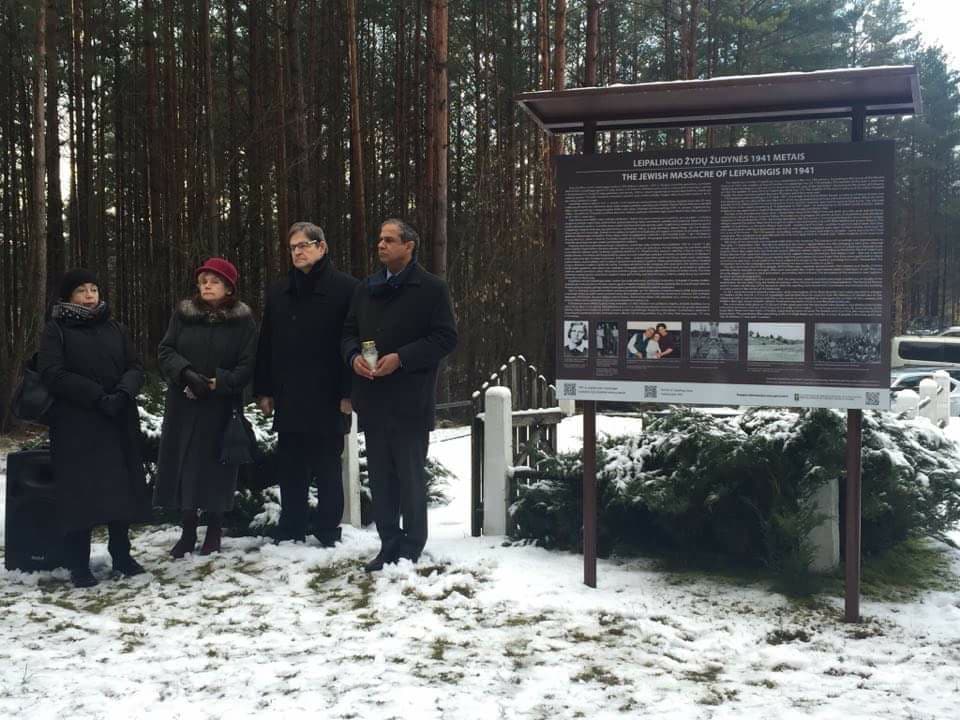
A commemorative sign was unveiled in the Lithuanian town of Leipalingis in the Druskininkai region Friday to commemorate the victims of the mass murder there in 1941.
20171018_pavardes_EN
A commemorative sign was unveiled in the Lithuanian town of Leipalingis in the Druskininkai region Friday to commemorate the victims of the mass murder there in 1941.
20171018_pavardes_ENMiami, January 7, 2018–While all grieving is individual, there are grief issues surrounding the loss of Holocaust survivors that are unique to the families of survivors. Until now, however, there has not been a dedicated approach to grief support for this population. Metropolitan Jewish Health System (MJHS) Hospice and Palliative Care based in New York is working to develop a grief support group to support families impacted by Holocaust trauma, and Targum Shlishi is supporting this much-needed initiative.
The Need
“We have found that the children of Holocaust survivors ask for grief support that is specific to their experience as members of the second generation. There are aspects of the grieving process that are uniquely different among family members of Holocaust survivors due to lifelong patterns of communication and behaviors in families of survivors,” explains Toby Weiss, MJHS’s director of cultural diversity and Jewish programming.
MJHS cares for a large number of Holocaust survivors at the end of life, and, by extension, it cares for the family members. As a hospice with a focus on family-centered and holistic care, MJHS also provides pre- and post-bereavement support for thirteen months. Although MJHS has long offered support groups, before now none have been tailored specifically to families of survivors. But as more people began asking for this service, MJHS researched the topic and found a marked lack of grief support groups dedicated to this population.
“This is a very real and unfortunately unmet need until now,” says Aryeh Rubin, director of Targum Shlishi. “We applaud MJHS for recognizing this problem and for taking the initiative to address it. These are the types of projects that, as a foundation, we are honored to support. People need this service and MJHS has the wherewithal not only to provide it to its constituents, but to create a model that it will share with others.”
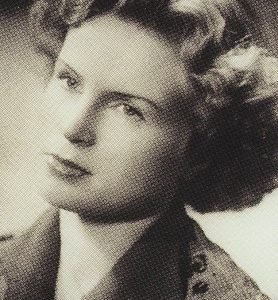
Righteous gentile Lilijana Binkytė has passed away. Our sincere condolences to her entire family and to daughter Sofija Ligija “Iga” Makutėnienė. The Binka family name will be forever associated with bravery and the triumph human decency.
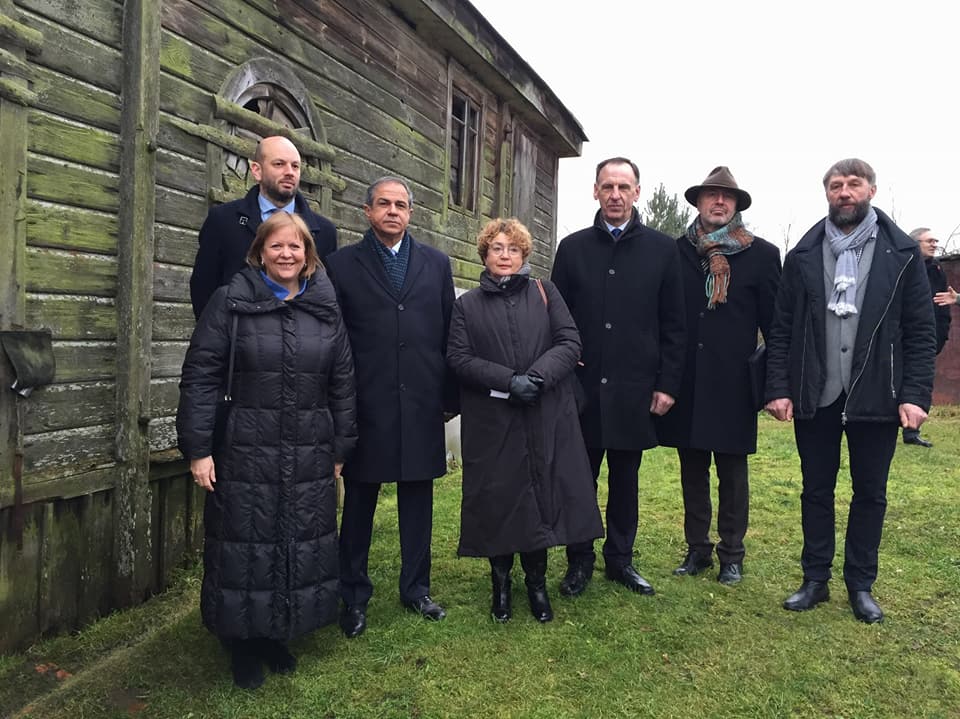
A delegation including Israeli ambassador Amir Maimon, US ambassador Anne Hall, Lithuanian Jewish Community chairwoman Faina Kukliansky, deputy Lithuanian foreign minister Darius Skusevičius, Cultural Heritage Department heritage expert Alfredas Jomantas and Molėtai regional administration head Stasys Žvinys visited the Alanta wooden synagogue near Molėtai, Lithuania, on December 3. The synagogue is listed on the Lithuanian registry of cultural treasures and is in dire need of restoration, according to members of the delegation. The Molėtai regional administration webpage carried details of that discussion:
Israeli ambassador to Lithuania Amir Maimon said: “It is important to all of us that history is remembered and all sites important and significant for history are restored. We’re talking today about Lithuanian heritage, not Jewish heritage. This is your history, this is my history.”
US ambassador to Lithuania Anne Hall said: “In recent times the Lithuanian Cultural Heritage Department has done great work in initiating the restoration of synagogues, churches and other important historical buildings. It is really impressive. This is one of the buildings whose restoration we look forward to, and I know many Americans are looking for a way back to Lithuania, Lithuanian and Jewish émigrés.”
Molėtai regional administration head Stasys Žvinys said the administration lacks funding for the synagogue’s restoration, although it is the only synagogue still standing in the entire region. He asked the Israeli ambassador to take the lead in solving the problem. “Although this is our shared responsibility, unfortunately the administration cannot at this time allocate from its budget the resources appropriate for restoring this synagogue. The synagogue is maintained to the extent the community is able to maintain it,” he said.
Faina Kukliansky, chairwoman of the Lithuanian Jewish Community, said: “Even if monies were found for putting the synagogue in order, there has to be content for this synagogue. Logically, if the building is restored but not used, not heated, not used for some purpose, then the money is wasted,” she commented.
The LJC has approached the Cultural Heritage Department about the wooden synagogue and applied for financing for restoration, but cultural heritage conservation specialists say there are many abandoned historical buildings in Lithuania and priority is given sites which have a foreseen use and function.
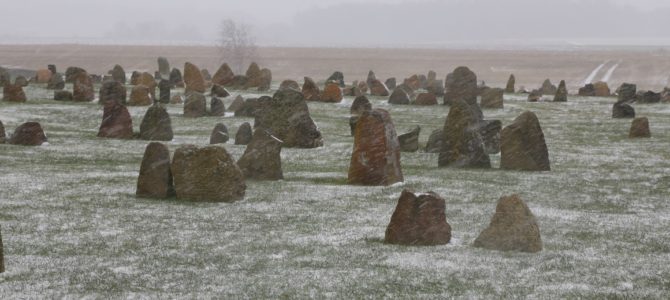
US ambassador to Lithuania Anne Hall continued her tour of Lithuania in late December with a stop at Šeduva where she met with people from the Šeduva Jewish Memorial Foundation and learned about their Lost Shtetl project, which has invested more than 3 million euros so far in restoring the old Jewish cemetery on Žvejų street there. Project director Sergejus Kanovičius recalled how they cleared the 1.3-hectare territory of weeds and bushes before cataloging and restoring headstones.
Lithuanian sculptor Romualdas Kvintas’s work commemorates the lost Jewish community and mass murder sites. There are three Holocaust mass murder sites around the town.
The cemetery restoration was just the first phase of the project and was completed in 2014. The project received honorable mention in European Union heritage preservation awards. A museum celebrating Lithuanian Jewish life is planned for 2018.
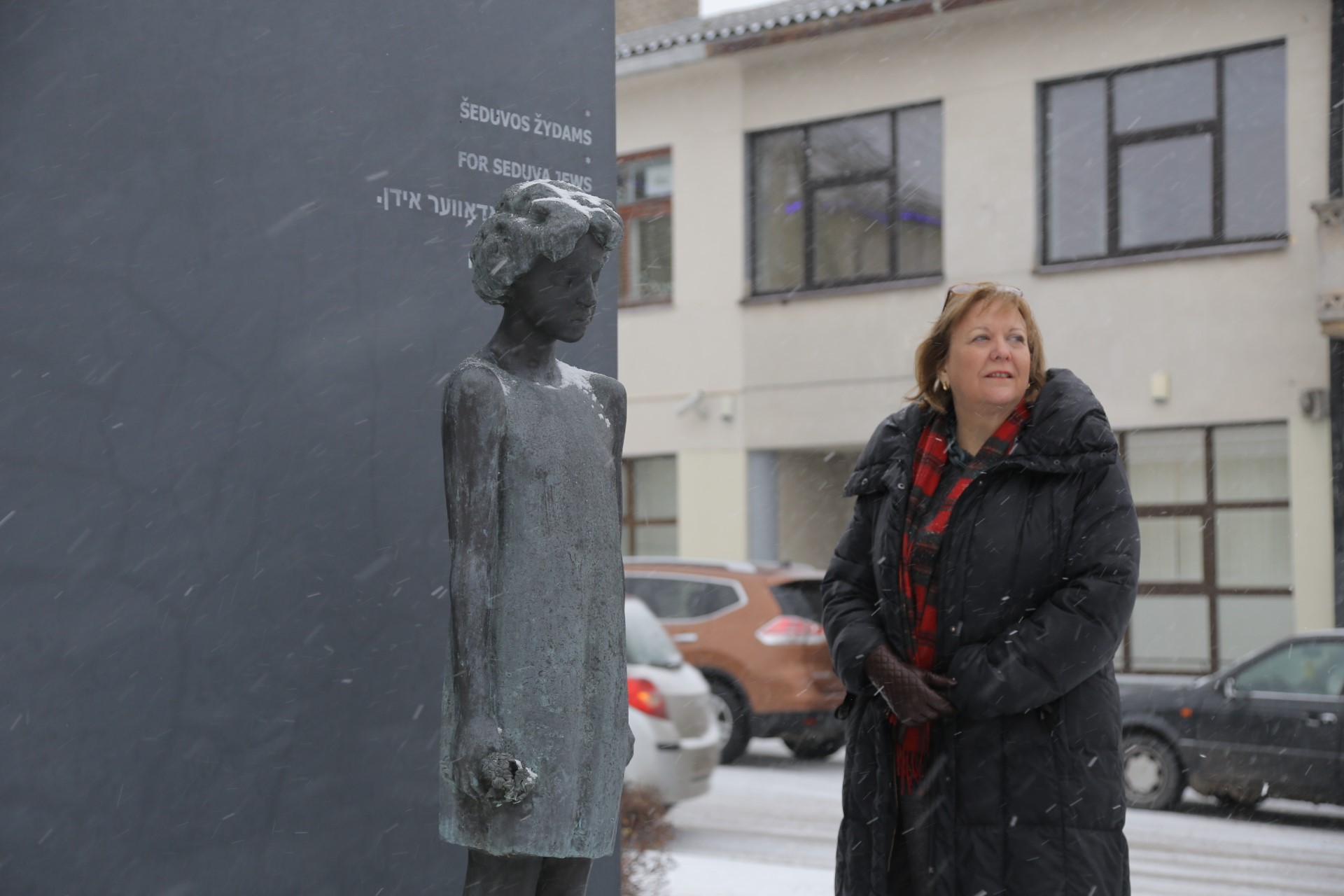
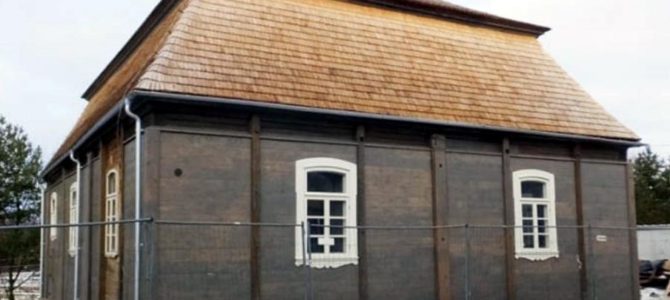
US ambassador Anne Hall with Lithuanian Jewish Community chairwoman Faina Kukliansky and the chairmen of the Panevžys and Šiauliai Jewish Communities toured the renovated Pakruojis wooden synagogue in late December. The oldest wooden synagogue in Lithuania was restored using period photography. The synagogue features unique paintings on the ceiling and wall paper. The interior and primitive paintings have been the subject of much interest. The restored synagogue has become a draw for Jews, Lithuanians and tourists from different countries.
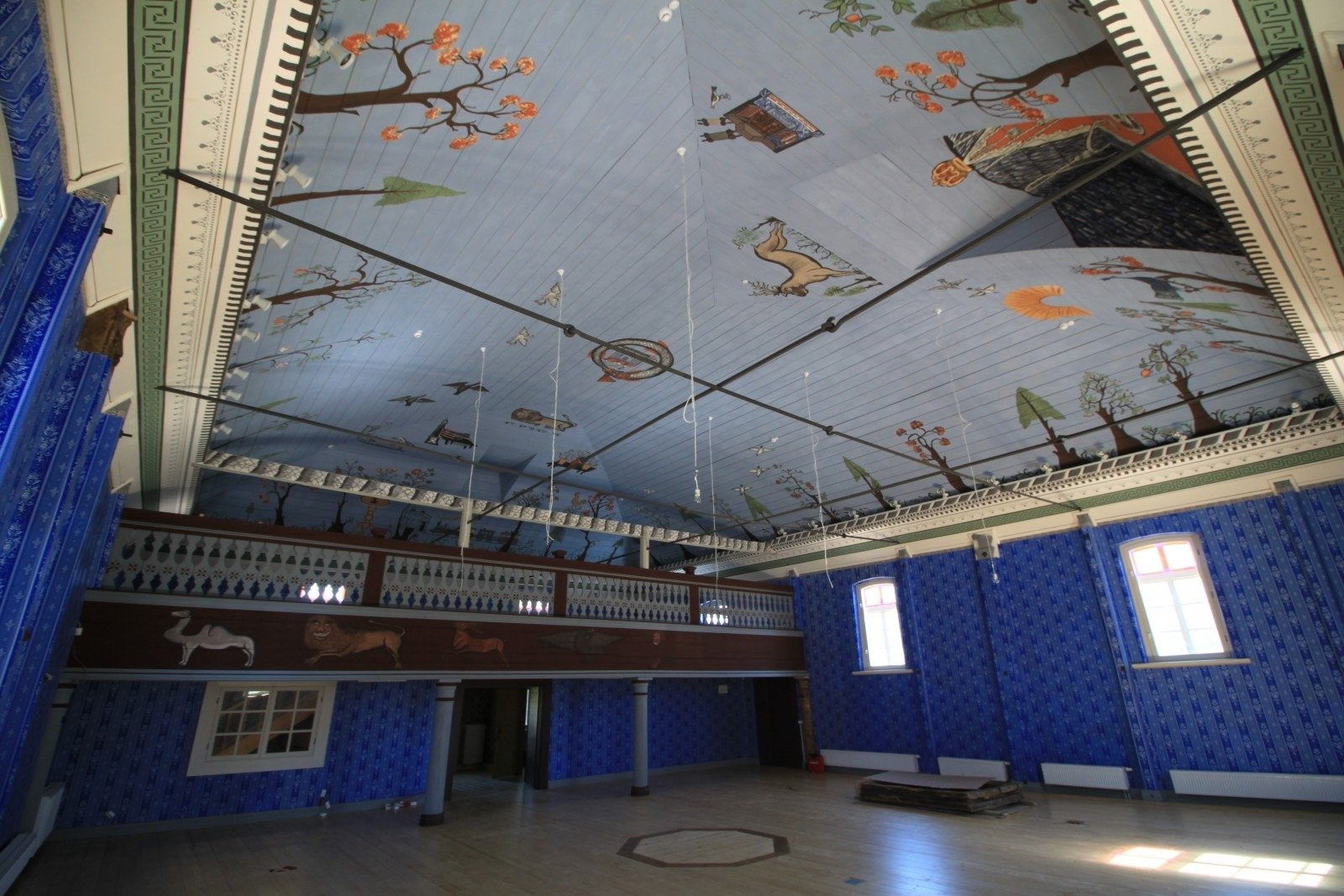
The small synagogue on the banks of the Kruoja River was built in 1801 and operated as a synagogue until the Holocaust when the Pakruojis Jewish community was murdered. After the war it was used a recreation center and then as a movie theater. At some point it was used a gym. It caught fire several times, doing great damage. The Pakruojis regional administration and the Lithuanian Cultural Heritage Department went to great efforts to save the building.
The Pakruojis regional administration and the Lithuanian Jewish Community signed a 99-year use agreement on January 21, 2011, on the synagogue’s administration and adaptation for cultural use.
The Pakruojis Jewish community formed in the early 18th century. Most of the resident Jews were merchants who contributed to the economic development of the town. The growing Jewish population also influenced the overall development of the town and its public life.
There are no Jews living in Pakruojis now.
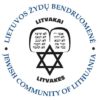
The  European Jewish Congress and the Lithuanian Jewish Community acknowledge the important contribution of Lithuania in creating a positive climate for Jewish life and Jewish tradition to flourish.
European Jewish Congress and the Lithuanian Jewish Community acknowledge the important contribution of Lithuania in creating a positive climate for Jewish life and Jewish tradition to flourish.
We also commend Lithuania for pursuing friendly relations with the State of Israel. This is undoubtedly a positive example for many European countries.
We encourage further respectful discussion on the topic of the tragedy of Lithuanian Jews during the Holocaust in order to allow for the restoration of historical justice. Those who try to reopen the dark pages of the history of Lithuanian collaboration, such as the renowned author Rūta Vanagaitė, should not be victimized or persecuted; instead, their efforts should be acknowledged.
We praise Lithuanian historians such as prof. Saulius Sužiedėlis, Dr. Valentinas Brandišauskas and Dr. Algimantas Kasparavičius who have spoken out on many occasions and written extensively on the topic of the Lithuanian Activist Front’s role in perpetrating the Holocaust in Lithuania. There is a lack of such content, however, to this day in Lithuanian textbooks. Neither is there sufficient mention of the vast Jewish contribution to Lithuanian society over the centuries. In a pluralist society those who speak out on the largest tragedy in European history should not be rendered incapacitated by inappropriate measures taken against them.
Having just concluded the celebrations of Hanukkah which signifies the victory of the mind and the soul against coercion, and just a few days after International Human Rights Day, we wish a happy and peaceful festive season to all the people of Lithuania and call for continued respectful discussion to enable the Lithuanian people to come to terms with their past.
https://eurojewcong.org/ejc-in-action/statements/joint-statement-european-jewish-congress-lithuanian-jewish-community/
![]()
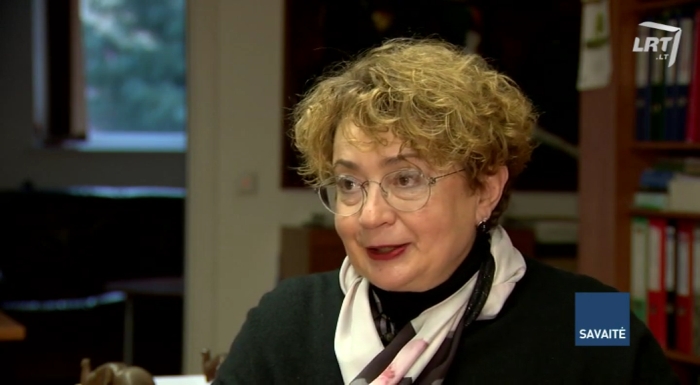
Lithuanian public television’s Sunday news program featured successful efforts by Lithuanian foreign minister Linas Linkevičius to get EU foreign ministers at the same table with Israel’s prime minister Binyamin Netanyahu. The overture for the first informal meeting with an Israeli PM in 22 years came before US president Donald Trump’s controversial decision to move the US embassy from Tel Aviv to Jerusalem. Linkevičius said he was motivated by the need for face-to-face contact between the parties, even if they do not agree on all the issues. President Trump’s decision made the meeting more urgent in the search for ways to control increased tensions. After the meeting Linkevičius presented Netanyahu a replica of the statue of a small girl the Šeduva Jewish Memorial Foundation commissioned from sculptor Romas Kvintas and erected in central Šeduva to commemorate the former Jewish shtetl there.
The television program also featured an interview with Lithuanian Jewish Community chairwoman Faina Kukliansky. An excerpt translated to English follows.
“We are very glad our foreign minister invited Mr. Netanyahu. We are very glad a Lithuanian representative has become the leading mediator between the Israeli prime minister and the European Union. Relations between Lithuania and Israel are very important to us. This is quite natural. Lithuania is our homeland but Israel is our historical homeland. It should be said that since Lithuanian independence relations between Lithuania and Israel have never been better than they are now. …”
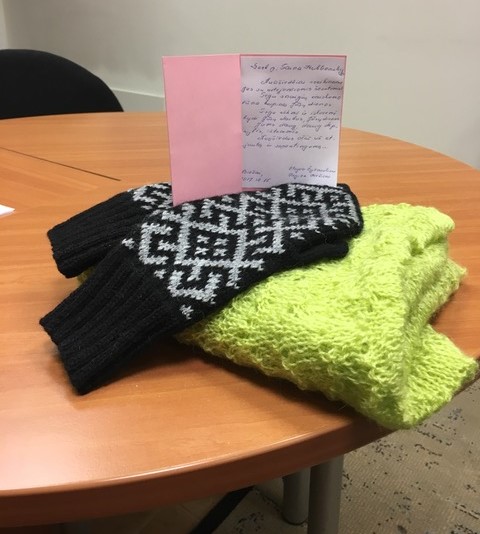
The Lithuanian Jewish Community received the following wonderful holiday greetings, thank-you note and accompanying mittens:
We sincerely congratulate you on the upcoming holidays. May the purity of snow fill your days. Let success and strength follow you all of your days. We wish you strength and determination. Our sincerest thanks for your sympathy and understanding.
Elvyra Čyžauskienė and Regina Kežienė
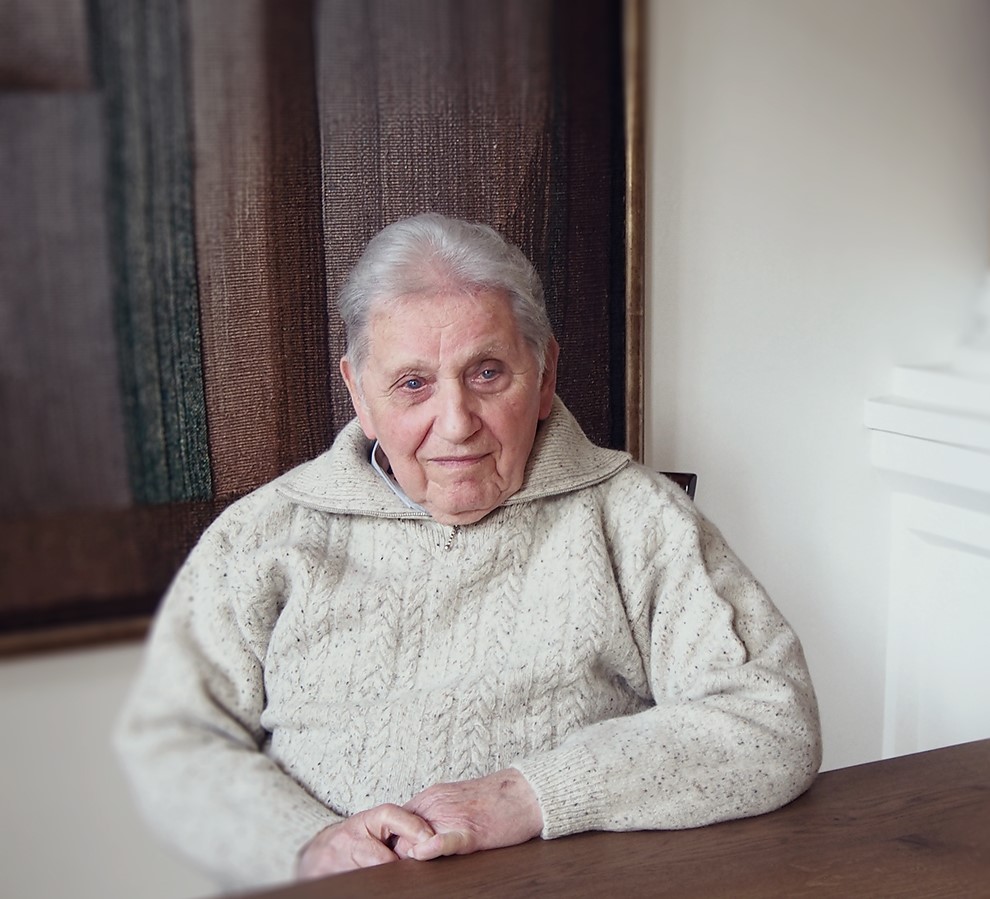
lzb.lt
Professor Dr. Adolf Bolotin is an honored member of the Lithuanian Jewish Community and the former chairman of the Vilnius Jewish Community. He also holds a doctorate in physics and mathematics, is the recipient of the Republic Prize, has received awards as a Lithuanian teacher and is a member of the Israeli and New York Academy of Sciences. He is now 92 years old. Most of his life has been centered around Vilnius University. Aspirantura, doctorantura followed by successful defense of his work, earning him a doctorate in quantum physics. He has published more than 250 and “raised” more than 20 doctors of the sciences. He has two children he raised together with his wife. He is highly respected by his friends, colleagues and the Lithuanian scientific community in general.
We spoke with Dr. Bolotin about the Jewish community and Jewish life.
“Very soon my book translated to English should appear in America. I have written a textbook for students on how to solve problems in quantum mechanics, not just about theory, but how to do this practically, with examples. I imposed upon one of my former students who now lives in the USA to translate it. The translation was sent to a publisher I was not familiar with and we received the immediate reply: ‘Great, we will publish it within one year, if you want to change anything.’ The book ‘Solution of Certain Problems in Quantum Mechanics’ by Adolf Bolotin should hit the shelves very soon.
“The publisher paid me, I didn’t pay them to publish it. They came up with the agreement and paid me under very good conditions.
“My wife and I lived together 71 years until her death. I am a widower; my daughter lives with me. I don’t lack anything, I am well taken care of, I get a good pension and I can’t complain about anything. Now I feel it has become difficult to fix the car, even though I have good hands, and I like to work on things because I graduated from university as an experimental physicist and then transferred to theoretical physics later.”
For more than 10 years now the Panevėžys Jewish Community has been doing educational work and participating at events held by the Rožynas Pre-Gymnasium’s Tolerance Center under director Genutė Žilytė.
Panevėžys Jewish Community chairman Gennady Kofman together with Žilytė, who is also an historian, told pupils the story of the Jewish struggle against the Greeks of Syria and the main points in that history. Steady work in education has borne good fruit in pupils’ understanding of Jewish history. The students asked many questions of all sorts, including for an explanation of the Lithuanian Jewish athletics club Makabi, and wondering what other Jewish organizations which existed before the war used the same name.
Students in the upper grades and their teachers made latkes for everyone. At the close of the event Rožynas Pre-Gymnasium principal Aida Adiklienė thanked everyone who participated, students, teachers and others, for their tolerance towards Jews.
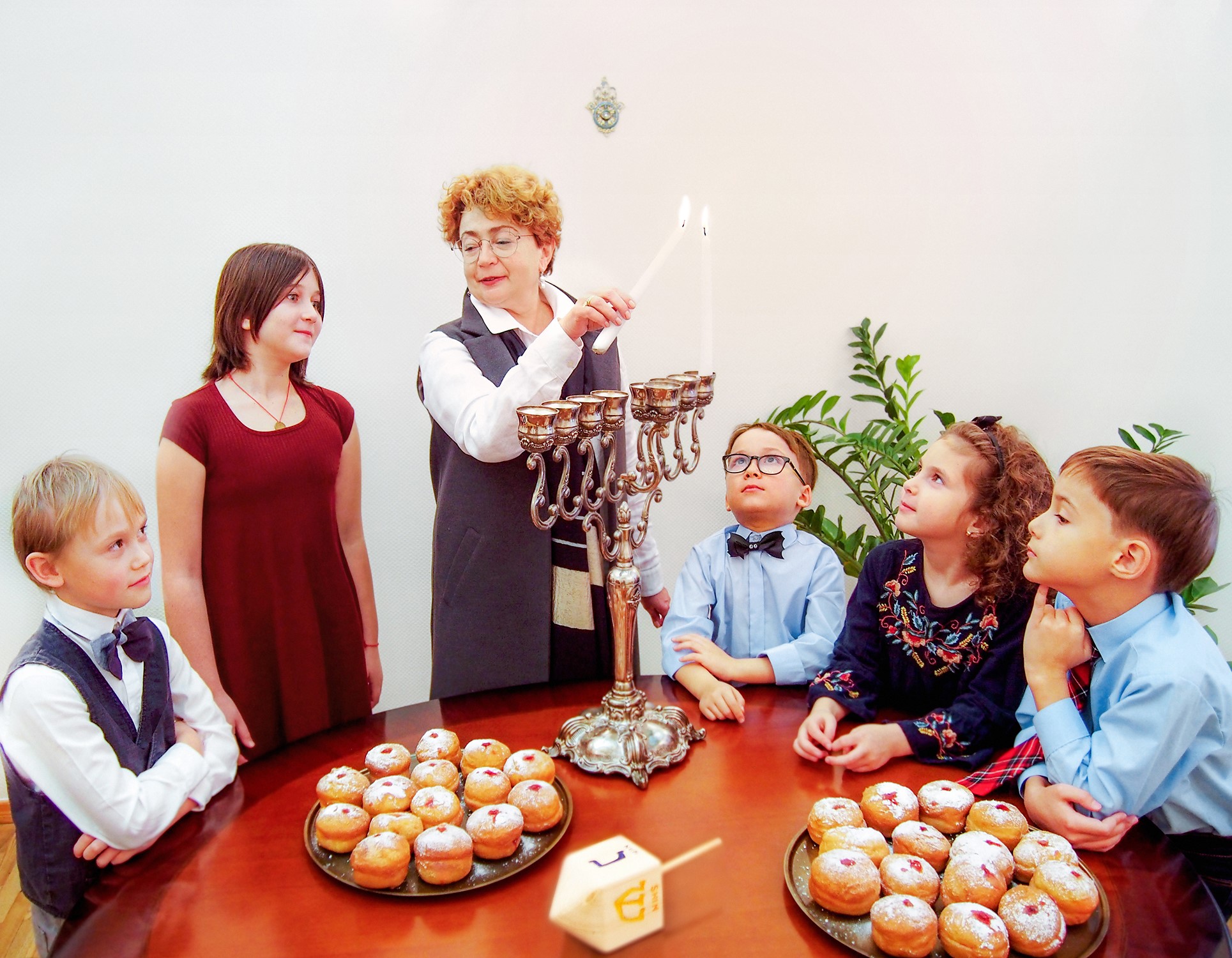
As I celebrate Hanukkah every year with my grandchildren, I remember the Hanukkah of my childhood with my grandmother. The holiday wasn’t as fun then as it is now and we didn’t get treats. My grandmother, hiding in the kitchen where there were no windows, lit the candles and prayed. We didn’t have a menorah, it was lost with all the family heirlooms during the Holocaust. She prayed, but her prayer wasn’t happy or celebratory, because she was always thinking about her son, and she always thought someone was coming, and she used to warn me: “hide, the children’s aktion is coming.” There weren’t fun times after the war. My grandmother was probably not the only one who remembered not just the Temple in Jerusalem, but also her murdered children.
Now we have better celebrations, we live better, so let’s learn to be happy and as we celebrate, let’s remember what miracle Hanukkah signifies for us all. I wish every member of the Jewish community more light, more understanding and warm and happy feelings. May the Hanukkah flame spread goodness in your home and provide the children waiting for their Hanukkah gelt happy moments, and the adults and everyone who sits at the family table to try the tasty Jewish latkes.
Happy Hanukkah, dear members of the Jewish community!
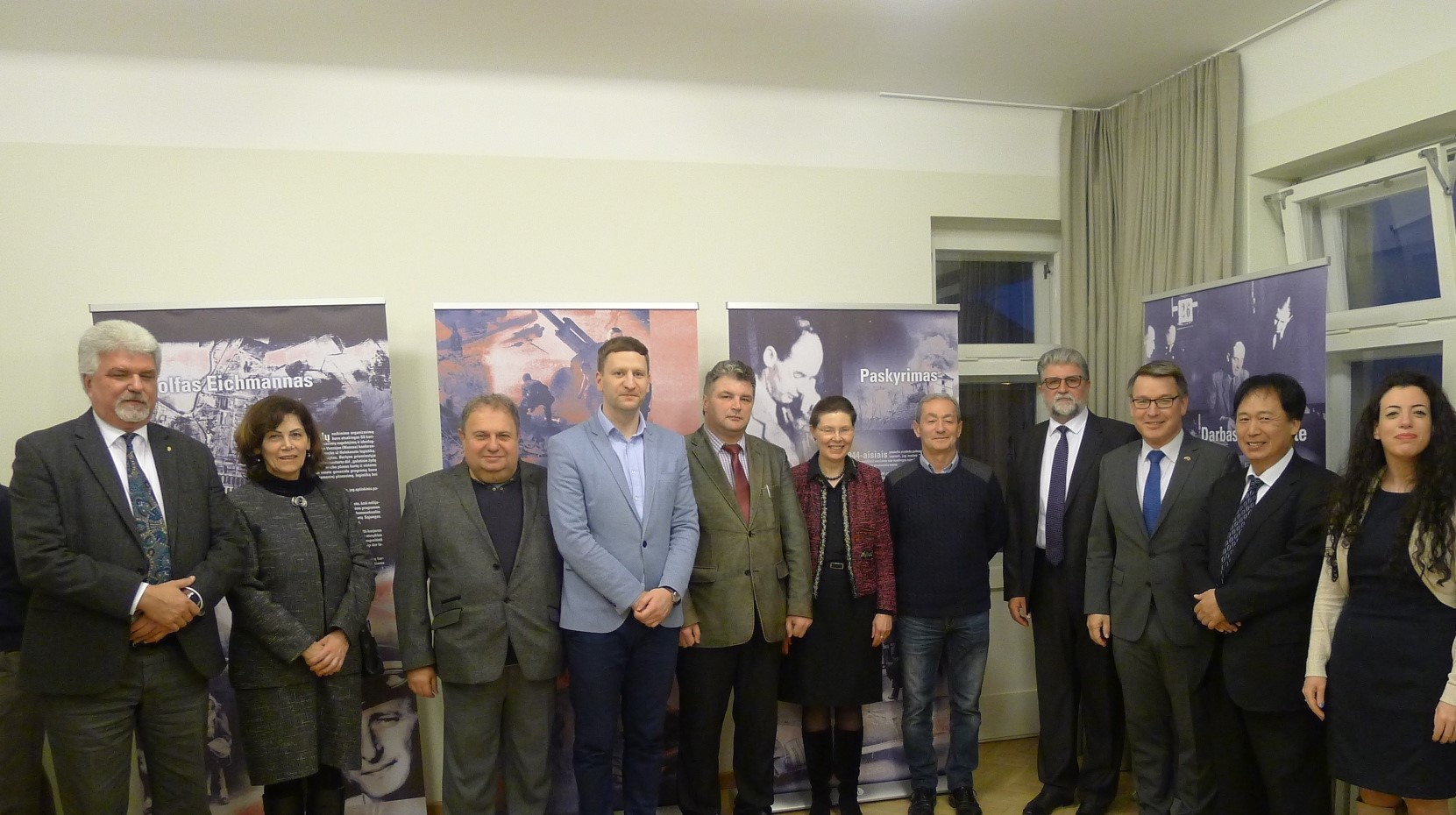
Sugihara House in Kaunas is hosting an exhibit by the Swedish Institute called “I Didn’t Have Another Choice” dedicated to architect, businessman, Swedish diplomat and rescuer of Jews Raoul Wallenberg. Wallenberg distributed Swedish passports to Jews in Budapest in 1944. He is credited with saving more Jews from the Holocaust than anyone else, approximately 20,000 Hungarian Jews out of the 120,000 Hungarian Jews who survived. Wallenberg was arrested and disappeared without a trace in the Soviet Union on January 17, 1945.
Photos by Raimundas Kaminskas.
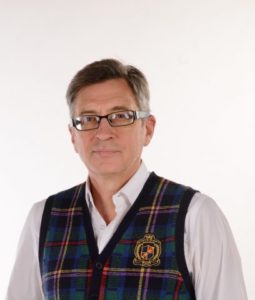
by Izabelė Švaraitė
manoteisės.lt
We should start by saying the headline doesn’t mean at all that there aren’t people in Lithuania who dislike Jews. There are abundant examples of hate in the past and the present, but as Klaipėda University historian professor Vygantas Vareikis says, anti-Semitic sentiments in the country formed under the influence of religion and neighboring states, ignorance or simply economic considerations. Unlike German, Austria or Poland, they were never consciously constructed into a political doctrine.
Professor Vareikis, who studies Jewish-Lithuanian relations, said religious animosity, or anti-Judaism, began to spread in Lithuania with the intensification of the ideology of the Catholic Church among the nobility. Vilnius University’s first rector Jesuit Petras Skarga wrote about Jews in terms of the theses used by St. Paul. that they were allegedly a nation which did not recognize the Christ and had murdered their prophets. But according to the way of thinking back then, Jews could return to the true faith by accepting Christianity. They weren’t the main target of the Catholics. “Conversion was always acceptable, and at one time, under the law of the Polish-Lithuanian state, a Jew who converted to Christianity could even acquire the status of nobleman,” the professor said. The public held a different view, there were widespread beliefs the Jews were trying to con Christians.
Full story in Lithuanian here.
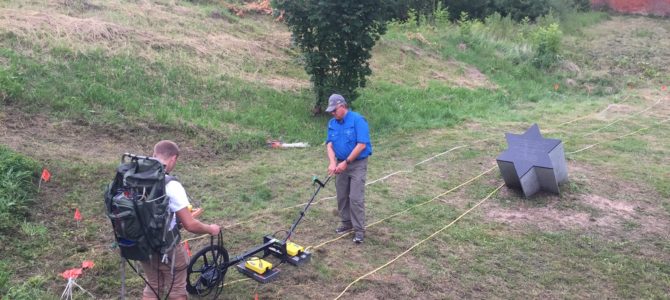
December 14, BNS–There is a proposal to set up information boards at Holocaust mass murder sites in Lithuania containing the names of both the perpetrators and the victims.
MP Eugenijus Jovaiša, chairman of the Lithuanian parliament’s Education and Learning Committee, tabled the proposal Thursday, saying it had been proposed earlier by Israeli ambassador to Lithuania Amir Maimon, and considered within the Center for the Study of the Genocide and Resistance of Lithuanian Residents for some time, although the Center said it would need additional financing to implement the idea.
“It’s not easy to do because there aren’t complete studies and we cannot say for every site exactly who is buried there. Yes, there are studies of this kind, there is some material, but to include all of Lithuania, to set up these signs, similar to the one in Leipalingis, as an example of a memorial, all across Lithuania, there’s not enough material. So it’s clear the activity of the Genocide Center will need financing, it will require funding, and we’ll find it,” Jovaiša said.
Jovaiša said there are only two mass Jewish graves in Lithuania today where visitors can read the names of the victims. He said it would require 86,000 euros to conduct a year-long study and erect the signs. He also said the stands would include information about the Holocaust, the local mass murders, the names and ages of victims, but also information about the perpetrators. Another commemorative sign was just installed in Leipalingis near Druskininkai, with an official opening ceremony scheduled for Friday.
Jovaiša told BNS this was “a project of the future” which would take longer than one year. He believed additional financing could come from the Lithuanian Government without increasing the budget for the Genocide Center.
Genocide Center director Teresė Birutė Burauskaitė said it has been the long-term goal of her institution that the names of the victims of the Nazi as well as Soviet regime wouldn’t remain nameless. She said the proposed signs would present the life of the local Jewish communities before World War II as well as the names of the perpetrators of mass murder based on historical sources and testimonies, and the local population’s view of the Holocaust.
“Sometimes the behavior of the local population is presented in a very one-sided way. Our goal is to show more fully what happened. Not just in Kaunas and Vilnius, where there has been much research, including our own and that of Western scholars, of our former fellow citizens, the memories and stories of the descendants of Litvaks. Everything which is accessible now should be included: all documents, testimonies. If we simply undertook to present a list of the names of all victims… we could name about 80% of them. But we think it’s very important to present the entire process and all of the participants, so that this history would be available at every site,” Burauskaitė told reporters.
She also admitted it would take more than one year to do this, and said Vilna Gaon State Jewish Museum and others “who understand the value and necessity of this work” might also be able to contribute.
According to Genocide Center statistics, there are about 200 Jewish mass murder and grave sites in Lithuania. More than 90% of Jews were murdered in the Holocaust in Lithuania out of a total of approximately 200,000. Today about 3,000 Jews live in Lithuania.
![]()
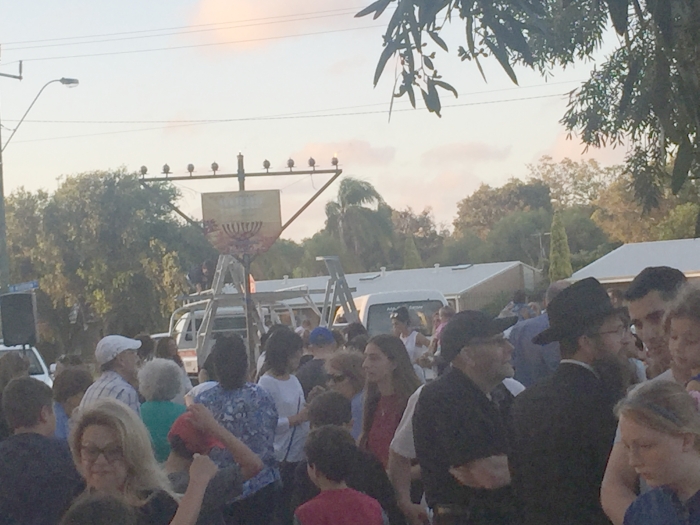
For the second year in a row students from Atžalynas High School in Kėdainiai, Lithuania, experienced Hanukkah in Perth, Australia, via skype on a large screen in their classroom.
Last year they heard Dylan Kotkis, Carmel School captain for 2018, sing Maoz Tzur while Western Australia’s Chabad Rabbi Shalom White explained the festival and the message of Hanukkah to the 15-year-olds.
This was probably the first time in 75 years this Hanukkah song had been heard in this town in central Lithuania once so important to Jews. No Jews live in Kėdainiai today.
This year teacher Laima Ardavičienė and her class attended the candle-lighting ceremony at Ben-Gurion Park in Perth with members of the Western Australian Jewish Community via skype. The ceremony performed by Rabbi Shalom White of Chabad Lubavitch House was preceded by an enjoyable performance by the entertainer Mickey Shaked. The Lithuanian students also had the opportunity to meet some of the locals via skype.
One of these was Heiny Ellert, a 95-year-old Lithuanian Holocaust survivor from Neishtot-Tavrig, today known as Žemaičių Naumiestis. I filmed his testimony for the Western Australian Holocaust Institute in 2014. It can be viewed at https://youtu.be/118HN2_NYHs
You can read more about this and last year’s Hanukkah activities and about Heiny and his shtetl at http://elirab.me/chanukah-in-the-park/
Eli Rabinowitz
Perth, Western Australia
December 13, 2017
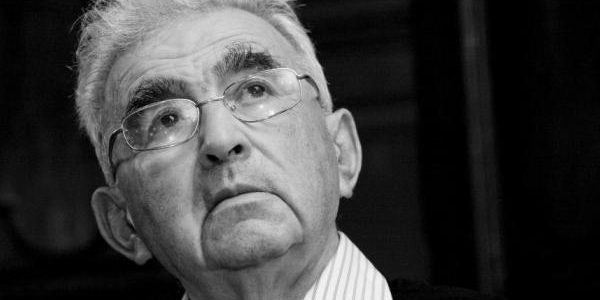
The Lithuanian Jewish Community sincerely thanks Dmitrijus Kanovičius for the wonderful gift of 250 books of the selected writings of Grigorijus Kanovičius.
Everyone, not just Jews, read Grigorijus Kanovičius’s books written with his great talent and profound emotional notes because they give the true story of the life of Lithuania made more charming with a sincere sense of nostalgia. These books are like living portraits with images of the past, of our forefathers, memories with color, words, laughter and pain. Today they stand as a monument and testament to all the murdered Jews… Grigorijus Kanovičius’s works for us are important as a treasury of memories, of those we have lost who shall live on forever in their shtetlakh, now mostly abandoned towns. It is said truly that Jews will live on even when there is no one left to remember them. We are so glad that thanks to the creative work of Grigorijus Kanovičius Lithuania has a rich saga of Jewish life featuring our ancestors from the 18th century to today.
Thank you, Dmitrijus.
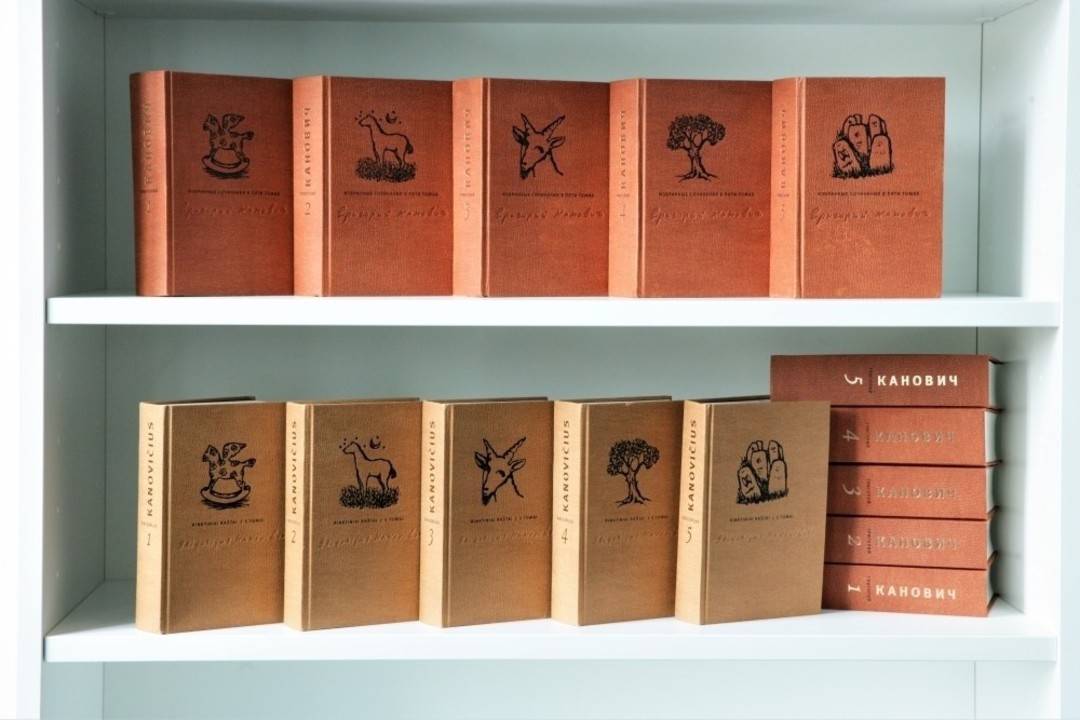
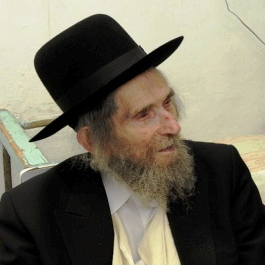
Litvak Rabbi Aharon Yehuda Leib Shteinman passed away December 12, 2017. He was a famous Orthodox rabbi and the greatest legal and spiritual authority among religious Litvaks. He was 104.
Aharon Shteinman was born in Brest-Litovsk in 1913. He fled to Switzerland during World War II where he taught at yeshiva.
Ponevezh Yeshiva Rabbi Kaanman asked Rabbi Shteinman to lead the Ponevezh Yeshiva for Young Men in Israel in 1955, where he was director to the end of his life. He also opened other yeshivot, Gaon Jaakov and Orkhot Torah.
The rabbi’s students published a collection of their teacher’s commentaries on Torah and Talmud.
In 1988 Rabbi Shteinman was a member of the Degel haTorah Torah sages’ executive board.
He was recognized in 2001 as one of the leaders of Litvak Judaism, and in 2012 Rabbi Shteinman became the leader of the Degel haTorah party.
Forbes magazine in 2012 reported Rabbi Shteinman was among the top three most-influential rabbis in Israel. Thousands flooded the streets for his funeral on December 12.
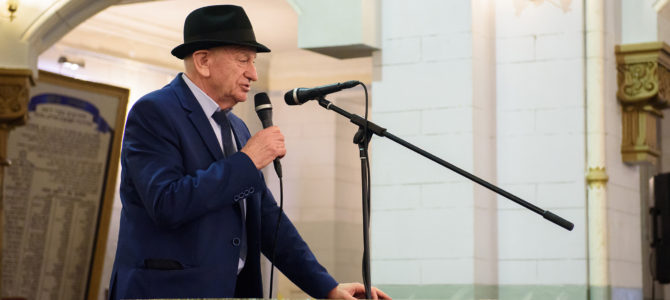
Šiauliai was a strange town in 1960. It was the Soviet time, there were still some “synagogues” illegally operating in apartments. Almost all of the local Jews used to go there to pray. It wasn’t entirely clear whether this was to satisfy a religious need, or the need to spend time with people of the same ethnicity. Or to speak Yiddish. Or to remember the horrible experiences of the Holocaust.
Or perhaps it was the instinctual psychological need to heal one’s wounds. Everyone wanted to enjoy the life which the miraculous lottery of fate had given them.
The town’s Jews stuck together and were ready to support anyone who needed it. This really wasn’t any kind of official community. Its leader was… a family with a larger apartment. We held all traditional and Sabbath evenings of Saturday talks and meetings there. This took place at the home of Josif Burshtein (the chairman of the Šiauliai Jewish Community until last summer) where Jews congregated right up until the restoration of independence.
Hanukkah was the holiday to which the town kids (they called us little Jewies) really looked forward. We were treated to hanukkahgelt, ponchikes and latkes. The parents carved dreidls out of wood. Some had managed to preserve their family heirlooms, a really miracle!, and we lit candles on pre-war menorahs.
Now I realize our parents did everything they could so that we wouldn’t know what they experienced. Everyone chipped in and used to hold the holiday, the miracles of Hanukkah, for us.
And even today most of the Jews who come from Šiauliai know and speak Yiddish. Those us “fun Shavl” [from Šiauliai] scattered around the world by fate maintain our ties.
This year on the eve of Hanukkah another miracle has taken place! We are witnesses to history. The world has begun to remember that King David’s city, whose age goes back more than 3,000 years, is the capital of the state of Israel!
The victory of the Macabbees has again lit the oil lamps of the Hanukkah miracle.
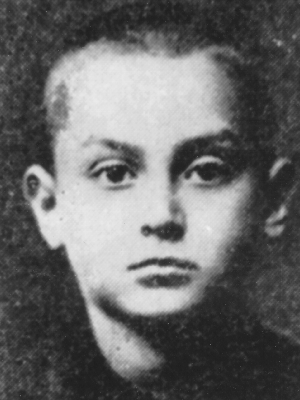
Yitzhak Rudashevski, the young chronicler of the Vilnius ghetto, would have turned 90 today (December 10). Imprisoned in the ghetto with his mature values and a gift for writing, he wrote down in his school notebook the reality around him, images of the ghetto, struggle and faith in the future.
Trapped in the ghetto and seeing the suffering, Yitzhak didn’t stop taking pride in his Jewishness and he wasn’t overcome by hopelessness and self-pity. On the contrary, his thirst for life propelled him forward.
“I am ashamed to be seen on the street, not because I’m a Jew but because I am ashamed of my powerlessness. The yellow patches are sewn to our clothes, but not to our minds. We are not ashamed of the patches! Let those who put them on us be ashamed,” he wrote in his diary.
The young man’s thoughts about the dignity of man and freedom might seem obvious today, but the entries from 75 years ago paint a much different picture of that period. They speak of a world where the concept of human rights didn’t exist. Taken in context, we marvel at the maturity, courage and talent it took for a teenager to write about what he did.